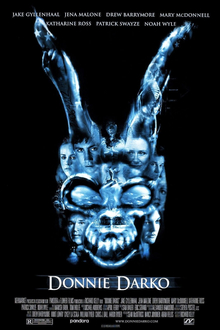1) What does Thomas Sutcliffe mean when he says "Films need to
seduce their audience into long term commitment. While there are many types of
seduction, the temptation to go for instant arousal is almost
irresistible"?
By this, Thomas
Sutcliffe means that the title sequence needs to be so engaging that the audience
is hooked from the very beginning of the film all the way to the end. The
audience will judge the film and be put in a mood and set expectations of the
movie so the opening sequence is the most important part of creating an
engaging audience.
2) According to Director Jean Jacques Beineix, what are the risks of
'instant arousal'?
'Instant arousal' from
the title sequence may cause the audience to expect too much from the movie and
therefore be disappointed in the rest of the movie. Instead, the arousal should
happen gradually, almost like the film is teasing the audience.
3) Explain why "a good beginning must make
the audience feel that it doesn't know nearly enough yet, and at the same time
make sure it doesn't know too little"
In
other words, the beginning of the movie must not give too much of the main plot
away, but also not give too little information and make the viewer confused and
lost as to what is going on. The small amount of information should have the
effect of making the audience want to know more about the plot.
4) What does critic Stanley Kauffmann describe as the classic opening? Why
does this work?
Critic Stanley
Kauffman describes the classic opening as a visual stimulant for the viewer to
set the expectations for the movie. It briefly explains what is going on by
using establishing shots to show the location or tracking shots of the main characters
to show their importance. Fonts of the titles should also be skilfully used,
such as using a childlike font to represent that there will be a child as the one
of the main characters.
5) Why is Kyle Cooper's title sequence to the film Seven so effective?
The title sequence of
Seven is very effective because it is personalised to let the audience view the
actions of a killer. The use of the many different props such as sharp objects
and disturbing images, and shot types gives an uncomfortable sense of fear.
This is further emphatisised by the dark sound track and titles which are have
the scratched effect.
6) What did Orson Welles want to achieve with his opening of the film 'A Touch
of Evil'?
Orson Welles wanted
to create the opening of his film with no credits or music. However Universal
Studious did not allow him as they did not believe that this type of title
sequence would engage the viewer.
7) What is meant by "a favourite trick of Film Noir"? What is the trick?
This is when the
opening of the film is actually part of the dramatic ending plot. The movie then
rewinds and starts properly to explain how it got to that scene. Now the
audience is constantly trying to figure out how the events in the movie conclude
with that scene.
8) How does the opening of the film 'The Shining' create suspense?
The opening of the
shining created suspense as the camera is used to show that the car is being
followed by a predator. The feeling that the car is not safe builds tension and
therefore engages the audience.















720.jpg)


